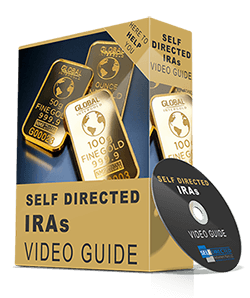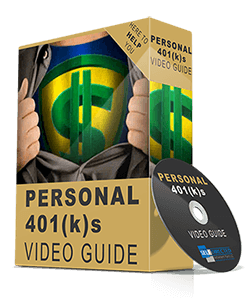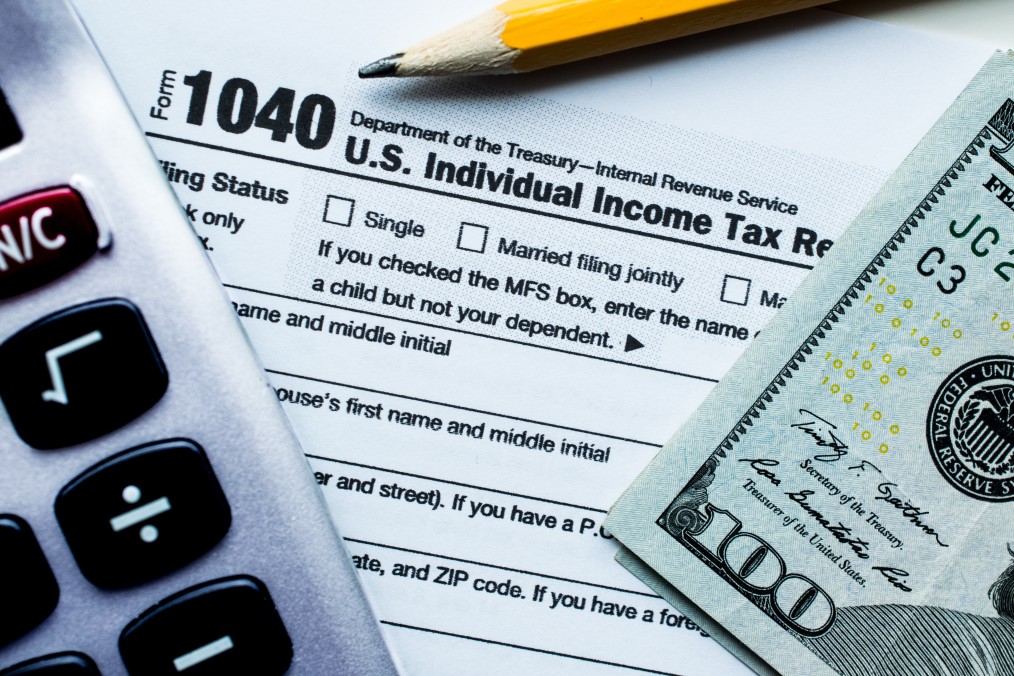
by Donnell Stidhum | Sep 18, 2021 | Uncategorized
How are 401(k) withdrawals taxed?
When you take distributions from a regular or traditional 401(k), they are treated as normal income and subject to income tax. Since your contributions to traditional 401(k) were paid with pre-tax dollars, you are liable to pay taxes when you start taking your distributions.
When you withdraw money from your traditional 401(k), the IRS considers the withdrawal as ordinary income and taxed as such. Therefore, the tax you pay on your withdrawal will depend on your tax bracket; the higher the distribution, the higher the tax payable will be. Moreover, if you withdraw from your 401(k) before you reach 59 ½ years, you may also be charged a 10% penalty on the distribution.
However, with a Roth 401(k), your distributions have a different tax treatment. Since your contributions to a Roth 401(k) are made with after-tax dollars, it’s unlikely that you’ll be taxed on your distributions, that is, if it’s a qualified distribution. A qualified Roth 401(k) distribution is when:
- your Roth account has sufficiently “aged” – it should meet the five-year aging rule
- you are old enough to make a withdrawal without a penalty – you can receive a tax-free distribution treatment once you reach the age of 59½
How can I withdraw from my 401(k) without paying taxes?
If you want to get your 401(k) money without paying taxes, here are a few strategies that you can use to reduce or eliminate the tax burden on your 401(k) withdrawals. Read on.
- Keep your tax bracket low.Keep your taxable income in a lower tax bracket when you take 401(k) withdrawals to reduce your tax bill. You can do this by withdrawing from your 401(k) up to your upper limit. This will help you avoid falling into the next tax bracket, which has a higher tax rate. For example, if you and your spouse’s income is below $81,050 (12% tax bracket), an income above $81,051 pushes you into a higher tax bracket (22% tax rate), resulting in a higher tax bill.You can limit the 401(k)-withdrawal amount by taking a combination of 401(k) and other sources such as your cash savings or Roth savings.
- Consider moving your savings to Roth.If you anticipate that your earnings in retirement will fall in a higher tax bracket, consider moving the savings to a Roth account. This can be done at once or over a period of years – therefore speading the tax burden. A lot of people use this multi year method to co-incide wth the five year rule. Since after-tax dollars fund Roth, your withdrawals in retirement will be free of tax.
- Consider borrowing from a 401(k) instead of withdrawing. Most 401(k) plans allow employees to take a loan from their 401(k) balance, up to 50% of their vested account balance or a maximum limit of $50,000, before they attain retirement age. The borrowed amount is not subjected to ordinary income and doesn’t attract an early withdrawal penalty if it follows the IRS guidelines. However, the borrower must repay the loan within five years by making regular and equal loan payments for the term of the loan. Any amount not paid in the five-year timeframe will be considered a deemed distribution and subjet to income tax and depending upon the person’s age, also subject to the 10% IRS penalty.
- Defer taking your Social Security benefitsIf you have already made a 401(k) withdrawal, consider deferring your Social Security benefits to ensure that you remain in a lower tax bracket. If you take both distributions at the same time, your taxable income increases, making your tax bill higher. Also, every year you defer taking your Social Security payments increases your benefit by approximately 8%.
- Avoid early withdrawal penalty. When you withdraw from your 401(k) before age 59 ½, you are subjected to a 10% early withdrawal penalty plus income tax. Even if you qualify for a penalty-free 401(k) withdrawal ( if you leave your current employer at age 55 or later), your distribution will still be considered as ordinary income, and you will be taxed. So try to avoid making an early withdrawal from your 401(k).
- Donate your distribution to a qualifying charity.If you are 72 years (soon to be changed to 73)you must take the required minimum distributions (RMDs) from your 401(k). If you don’t need the RMDs to pay for your expenses, you can avoid paying tax by rolling over your funds to an IRA and donating the distribution to a qualifying charity.
- Rollover your 401(k) into another 401(k) or IRA.If you are still working, you need to know that you don’t have to take 401(k) distributions at your current employer. But if you have old 401(k)s with your previous employers, you will have take RMDs from these accounts once you reach age 72. If you want to avoid taking RMDs without being taxed, roll over your 401(k)s with your previous employers into your current 401(k) before you turn 72. This way, you can defer taxable income until retirement. By then, your distributions may fall in a lower tax bracket, if you don’t have any earned income.
- Get disaster relief. When disaster strikes, the IRS offers 401(k) distributions relief to people residing in areas prone to disasters like tornadoes, hurricanes, and other forms of natural disasters. If you are below 59 ½ years and make an early 401(k) withdrawal, you can get a 10% early withdrawal penalty waiver.The IRS also offers a waiver in case of hardship withdrawals such as putting a downpayment for your primary residence mortgage, difficulty in paying college tuition, job loss, etc. For example, during the COVID-19 pandemic, the CARES act allowed people to take a hardship distribution of up to $100,000. This withdrawal did not incur the 10% penalty for early withdrawals.
- Consider tax-loss harvesting.Tax-loss harvesting is selling underperforming securities from your investment portfolio. The losses you incur on your securities offset the taxes on your 401(k) distribution. If you exercise this correctly, tax-loss harvesting can offset all or some of your tax burden generated through a 401(k) withdrawal.
The Bottom Line
These are some very good strategies for avoiding or reducing income taxes on your 401(k) withdrawal. However, these are advanced strategies used by financial experts to reduce the tax burden of their clients. If you want to implement these strategies, don’t go ahead unless you have a high degree of financial and tax knowledge. The best thing you could do is seek help from a financial expert to ensure that you are using the right strategy to reduce or avoid your tax bills.
My goal is to assist clients/investors in their quest for financial freedom and creating generational wealth through one on one consultation and an abundance of online tools to educate. For the past 5 years I have been a private pension plan consultant with Self Directed Retirement Plans working directly with my partner Rick Pendykoski (owner) or you can .

by Rick Pendykoski | Aug 12, 2021 | Uncategorized
As they grow older, seniors may wonder how they can maintain an independent lifestyle for as long as possible. Independent living for seniors communities provides older adults with convenient housing that includes group activities, meals, transportation, and other amenities that can help them thrive.
However, independent living for seniors might not be the best fit for every individual. People who struggle with more complex medical issues might consider nursing homes and other assisted living options. This guide will help seniors decide what living option is ideal for their needs and explain what to look for when seeking the best retirement facility.
What is Independent Living?
Compared to assisted living, independent living for seniors is more suited to seniors who can manage daily activities on their own. For instance, meal preparation, some household chores, medicine management, and taking care of personal hygiene are some of the activities that a senior living in a retirement community should be able to do independently.
Those who have difficulty performing these tasks unassisted might benefit from a caretaker or additional supervision from assisted living community options. On the other hand, some independent living communities also provide assistance when needed but on a more limited basis. Laundry, housekeeping, and meal services can be included in some places.
There are also plenty of perks that come with investing in independent housing since many communities tend to provide access to dining options, sports and entertainment options, and exemplary medical care.
Is Independent Living Right for You?
To help you decide whether independent living for seniors is right for you, some factors to consider include your current ability to maintain your home, social needs, ability to access transportation, and your health requirements.
- Home Maintenance
As you age, you might have difficulty keeping your home neat and tidy. Multiple bedrooms, a large backyard, and steep staircases might make cleaning more difficult to handle if you have issues with mobility. Another challenge may be increased levels of crime around your area. Lastly, costly roof repairs could add to your burdens.Although some of these issues can be solved by installing senior-friendly features like walk-in tubs and extra lighting or hiring a housekeeper, some individuals might find that independent living for seniors offers more freedom and convenience. Many gated communities handle maintenance needs, and they eliminate the struggle of contacting people on your own.
- Social Needs
If you live alone, loneliness and isolation can quickly set in and lead to depression and other mental health issues. The risk of this can be increased if you have poor vision and are unable to drive or have mobility issues that impact your ability to walk around your neighbourhood.In order to remedy this, independent living for seniors options offers you the chance to create a new network of friends through fun group activities. You’ll be able to meet like-minded people your own age in a safer and more convenient location. Some places also make it easier to access mental care services, such as a therapist if you need to seek counselling.
- Transportation Options
If a bus stop is located far from your home and you aren’t comfortable with driving, it may be increasingly difficult to attend social gatherings, keep up with doctor’s appointments, and do your groceries. Although delivery options exist, there are plenty of social and economic challenges that present themselves if you lack access to convenient transport.Independent living for seniors communities tend to offer regularly scheduled journeys and allow you to visit these places at your leisure. Many of them are also located near supermarkets, restaurants, and cinemas, making it much easier to get around.
- Health Requirements
Perhaps the most important factor to consider when deciding whether to pursue an independent lifestyle is your health. If you can manage to take your medication on your own, and do basic activities such as bathing, eating, and arranging your finances, a retirement community is a good option for you.On the other hand, if you have a health condition that is probably going to grow more severe as time passes, it may be best to consider other housing options for the elderly. This includes assisted living facilities and board and care homes or hiring a live-in caregiver to fulfil your needs.
How to Choose an Independent Living Facility
Different people will have their own unique preferences when it comes to choosing an independent living community. To help you narrow down your choices, try thinking about your current and future priorities.
- Determine your expenses
On average, the cost of living in a senior housing community can cost anywhere between $1,500 to $6,500 a month. However, this figure can be influenced by your location, type of room, and the type of services that are included in your monthly contract. Depending on your budget, you may need to consider shared living options or smaller apartments instead of private cottages or seaside locations. low-cost housing options for seniors, you may be able to qualify for an apartment in a budget housing community if you have a limited income. Additionally, you can check whether there are any special deals or payment plans you can take advantage of. Also, check whether additional fees and deposits are included in the quoted cost.
- Check the safety features
As a senior living alone, security should be one of your top priorities. While most independent living communities don’t have regularly scheduled medical care, they should have some safety features in place in the event of an emergency. This can include grabbing bars and fall detection technology for seniors.Some good signs to look out for include emergency alert systems, security staff, accessibility features around the area, and evacuation plans in case a disaster happens. Checking the proximity of nearby hospitals and clinics is also a good idea, especially if you have any pre-existing health conditions that could be a cause for concern.
- Evaluate the housekeeping and maintenance options
One major perk of independent housing is that cleaning services are often included or offered as part of your monthly expenses. Check whether your potential home offers regularly scheduled room cleanings, laundry services, maintenance and repair, and other convenient services that can simplify your life.As you tour the area, also take a look at how clean public spaces are, as this often tells you a lot about the quality of service offered.
- Explore the amenities on offer
If fitness, creativity, or continuing education is a special priority for you, take a look at what group or individual activities are offered by the community. While some of these may be free of charge, others may charge a monthly or per session fee so you should take this into account.Don’t forget to look at other recreation facilities in the area that you can walk or get a short ride to, such as parks, beaches, and sports clubs.
- Look at your dining options
Often, independent living communities offer three meals a day in addition to any snacks and drinks you might require. Ask staff for a menu to see what’s typically offered and check whether they offer vegetarian or vegan options if necessary. Depending on your needs, you might prefer to cook in your own apartment or have access to a buffet-style option.You can also check whether there are any restaurants located near your community if you’d like a change of pace. Snack machines and 24/7 dining options might also be a priority if you tend to get hungry often.
Making the Transition to an Independent Lifestyle
Although there are many benefits of independent living for seniors, it can be challenging and stressful to make the transition to a new home, especially at an advanced age. To help your loved one’s move go more smoothly, here are some tips to keep in mind.
- Pack well in advance
To avoid any stress, make sure that everything is ready to go before the move-out and move-in date. Help your loved one decide what to pack to their new home and which ones they can donate, sell, or give to other family members.Ensure that all their boxes are well labelled and that they have a packing list to refer to so that they can locate any key items as fast as possible. Some seniors may have a lot of possessions to go through, so this process may take longer than expected.
- Be understanding of your loved one’s emotions
Coming to terms with the move can be especially hard for seniors who have spent many years living in one home. They might be more moody or argumentative than usual as the move-in date nears.To help them adjust, try your best to be understanding of their emotions and help them find ways to cope. This can include taking lots of pictures to remember their old home or bringing along their cherished decorations or furnishings to their new home.
- Join them as they settle in their new home
Helping your loved ones unpack their belongings and get settled in their new community can make them feel more at ease. Rearrange furniture so that it feels as much like home as possible, and get any technology and smart devices set up for video calls or medical emergencies as soon as possible.Spending the first meal together, whether it’s in the communal dining hall or in the private kitchen can also provide a greater sense of comfort and belonging.As a senior, living independently in a thriving community can keep you healthy and happy as you age. As well as carefully researching each living option and what it has to offer, taking in-person tours can help you decide which senior living community is the best fit for you in the long run.
Have any questions? Let us know in the comments below!
Rick Pendykoski is the owner of Self Directed Retirement Plans LLC, a retirement planning company based in Goodyear, AZ. He has over three decades of experience working with investments and retirement planning, and over the last ten years has turned his focus to self-directed ira accounts and alternative investments. If you need help and guidance with traditional or alternative investments, call him today (866) 639-0066.
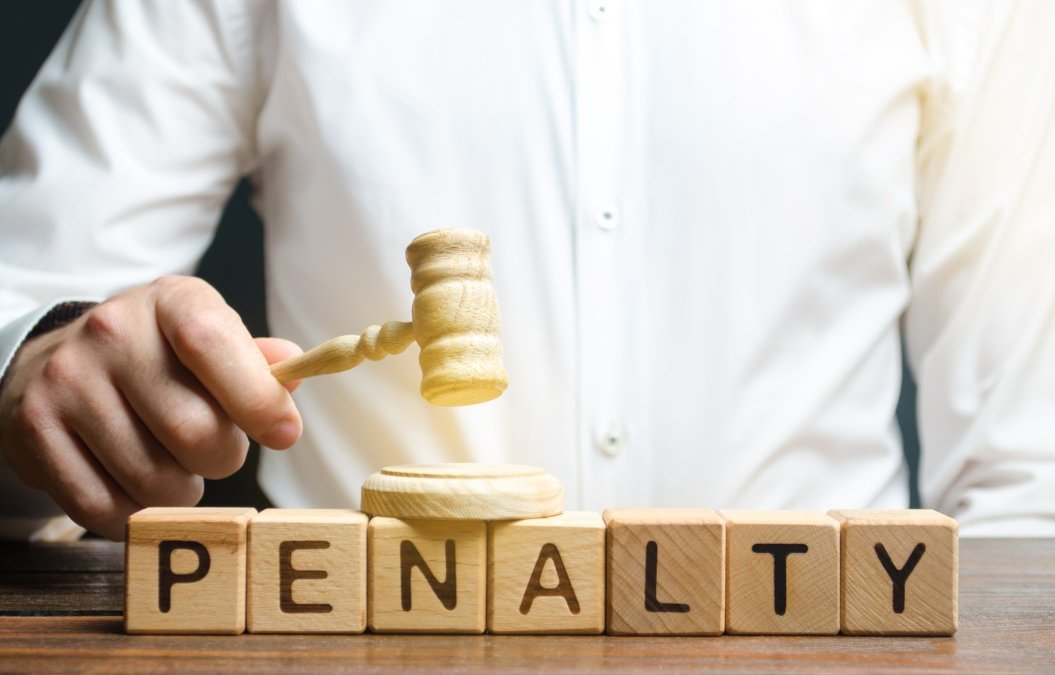
by Rick Pendykoski | Jul 23, 2021 | Uncategorized
401(k) plans are designed to help you save for retirement. Therefore, the IRS discourages withdrawals from 401(k) plans until you turn 59 ½. If you are trying to withdraw early from your 401(k) – before you reach the magical age –you will have to pay a steep price for it if you don’t tread carefully.
In this article, we’ll examine the three early 401(k) withdrawal consequences and offer ways to avoid early withdrawal penalties.
Consequences of Early 401(k) Withdrawal
If you withdraw from your 401(k) before you are 59 ½, you will have to pay federal as well as state income taxes, plus a 10% early withdrawal penalty. The three consequences of early withdrawal are:
- Penalty: If you withdraw money from your 401(k) before age 59½, you are charged a 10% penalty when you file your tax return. For example, if you withdraw $20,000, a penalty of $2,000 will be assessed when you file your tax.
- Withholding of taxes: The IRS generally withholds 20% of a 401(k) early withdrawal for taxes. For example, if you withdraw $20,000, you’ll only get $16,000, and $4,000 will be withheld for tax. You may get some of the amounts back as a tax refund if the withheld tax is more than your tax liability.Note: Between income taxes and penalty, your effective take home could be $14,000 for a total early withdrawal amount of $20,000.
- Less money for the future: When you withdraw early, you are essentially pulling out money that could have earned good market returns and helped you accumulate more wealth.
How to Avoid Early 401(k) Withdrawal Penalties
There are ways to avoid early 401(k) withdrawal penalties, and they include the following:
- Check whether you qualify for a hardship withdrawal: A hardship withdrawal is a withdrawal of funds from a retirement account to pay for an immediate or large financial need. If you qualify for a hardship withdrawal, you won’t be penalized for 401(k) early withdrawal. The following qualify for a hardship withdrawal:
- Money to buy a house, and not for mortgage payments
- Medical bills for you, your spouse, or dependents
- Money to avoid eviction or foreclosure
- College fees, tuition, and room and board for you, your spouse, or your dependents Funeral expenses
- Certain home repair costs
- Check whether you qualify to get an 10% tax penalty exception: The IRS generally waives the early 401(k) withdrawal penalty in the following situations:
- When you agree to receive SEPPs (substantially equal periodic payments). Here you choose to take a series of equal payments from your account that begin once after you stop working. These payments continue for life and are usually the same amount for at least five years or until you reach 59½ (whichever is longer). This is quite a complex process, so it’s best to consult a qualified financial advisor first.
- When you have to cash out your 401(k) in a divorce. If the court orders you to cash out a 401(k) to split with your ex-spouse, the early 401(k) withdrawal penalty might not apply.
- When you leave your job. If you leave your work when you turn 55 or later, you may get an exception to the 10% penalty.
Other exceptions for penalty-free early 401(k) withdrawals are:
- You are or become disabled.
- After your death, the payments went out to your beneficiary or estate.
- You rolled over your 401(k) into another qualified retirement plan within a certain period.
- You adopted or gave birth to a child during the year.
- The money was used to pay an IRS levy.
- You were auto-enrolled in a 401(k) or overcontributed to it, and you want out.
- You are a disaster victim and IRS has granted relief.
- You were called to active duty in the military.
- Consider converting your 401(k) to an IRA: The withdrawal rules for individual retirement accounts (IRAs) are different from 401(k)s. So, if you convert your 401(k) to an IRA before making the early withdrawal, you might be able to avoid that 10% 401(k) early withdrawal penalty.
- Consider a Personal 401 k Loan : If your Plan allows for loans you are generally allowed to borrow 50% of your plan’s assets up to $50,000. This loan can be paid back over a five year period with minimal interest AND the interest is going back to your Plan. So if you are going to remain employed for five years, consider the loan procedure – you will avoid taxes and the Penalty. If for any reason you can’t pay back the loan in the five-year window, THEN the remaining unpaid balance will be considered a distribution and the taxes will be due on that amount. If the five-year window pushes you past the 59 ½ age, then any unpaid amount should not incur the penalty. So, make sure that you really need the money you withdraw because it’s not possible to get the money back once you pay those taxes.
It’s actually never a good idea to cash out a 401(k) for frivolous expenses like buying a car. If you have to take an early withdrawal from your 401(k), let it be only for true emergencies. Early 401(k) withdrawals attract taxes and penalties, plus stunt the growth of your retirement saving – is it worth it?
Rick Pendykoski is the owner of Self Directed Retirement Plans LLC, a retirement planning company based in Goodyear, AZ. He has over three decades of experience working with investments and retirement planning, and over the last ten years has turned his focus to self-directed ira accounts and alternative investments. If you need help and guidance with traditional or alternative investments, call him today (866) 639-0066.

by Rick Pendykoski | Jun 19, 2021 | Uncategorized
Secure act 2.0 Other Changes include the following:
- Increasing the required first-year required minimum distribution (RMD) age over time from age 72 to age 75.
- Indexing $1,000 IRA catch up contributions for inflation.
- Increasing the limit on catch-up contributions to 401(k) and other plans for individuals who have attained age 62, 63, or 64.
- Allowing matching contributions on student loan payments.
- Eliminating the requirement that premiums for QLACs be limited to 25% of an individual’s account balance.
- Reducing the penalty for failure to take RMDs from 50% of the shortfall to 25%.
- Expanding the IRS self-correction program (EPCRS) to include IRAs.
- Indexing the $100,000 QCD limit for inflation and allowing a once-in-a-lifetime QCD to a split-interest entity such as a charitable remainder unitrust.
- Expanding the age 50 exception to the 10% early distribution penalty to private-sector firefighters.
- Changing the rules for when the statute of limitations begins for the excise tax on excess IRA contributions.
- Limiting the repayment of qualified birth or adoption distributions to three years.
- Allowing penalty-free withdrawals from IRAs and retirement plans for individuals in cases of domestic abuse.
- Limiting the loss of tax-deferred treatment to the portion of an IRA to involved in a prohibited transaction.
Rick Pendykoski is the owner of Self Directed Retirement Plans LLC, a retirement planning company based in Goodyear, AZ. He has over three decades of experience working with investments and retirement planning, and over the last ten years has turned his focus to self-directed ira accounts and alternative investments. If you need help and guidance with traditional or alternative investments, call him today (866) 639-0066.
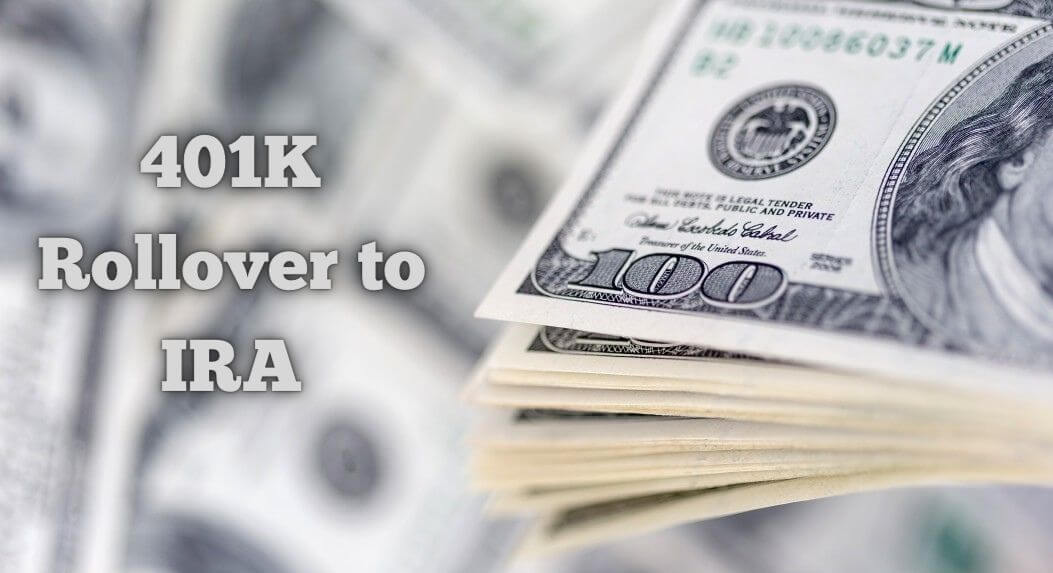
by Rick Pendykoski | Jun 19, 2021 | Uncategorized
If you have changed jobs, it’s important to understand the several options you have with your old 401(k) retirement account. Typically, you have four options:
If you do not want to pay taxes and other penalties, it’s best to avoid the cashing out option. If you have switched jobs, rolling your 401(k) into an IRA is probably the best option for you.
What is a 401(k) rollover?
A 401(k) rollover is a transfer of funds from an old 401(k) account to an individual retirement account (IRA) or another 401(k).
Rolling Over Your 401(k) to an IRA
IRAs offer a wider array of investment options than 401(k)s. So, when you roll over from 401(k) to an IRA, you have not only better investment choices but also better control over your investments.
Most IRAs allow you to invest in various types of assets, including bonds, stocks, mutual funds, certificates of deposit (CD), real estate investment trusts (REITs), exchange-traded funds, and annuities. And if you set up a self-directed IRA, you can also invest in alternative investments such as physical property, oil and gas leases, and commodities.
If you want to roll over your 401(k) to an IRA, you need to decide whether you should opt for a traditional IRA or a Roth IRA. It is a choice you have to make between paying taxes now or later.
Rollover 401(k) to IRA Tax Consequences
Generally, there are no tax implications when you roll over your 401(k) to an IRA.
You have two options to rollover 401(k) to an IRA: direct or indirect rollover. In a direct rollover, money is directly sent from your old plan into your new IRA. In an indirect rollover, a check is sent to you after withholding 20% of your funds. The withheld funds are taken as a taxable distribution. You are then given 60 days to deposit this money into a new IRA or any other tax-deferred account. If you fail, the entire balance is subject to a 10% early withdrawal penalty, assuming that you are under the age of 59½.
7 Reasons to Roll Over Your 401(k) to an IRA
- Wide range of investment options: A 401(k) is limited to only a few investment options, including mutual funds. But with an IRA, not just mutual funds, a host of other types of investments, including individual stocks, bonds, exchange-traded funds (ETFs), etc., are made available to you.
- Possibility of a Roth account: You can roll over an IRA into a Roth IRA. With a Roth IRA, your contributions are taxable, and your withdrawals are tax-free. You are also not required to take the mandatory required minimum distributions at age 72.
- Lower fees and costs: If done correctly, there should be few, or no costs associated with rolling over a 401(k) to an IRA.
- Better communication: Having access to your retirement account information is important. But if you leave your 401(k) with your old employer, it may get harder for you to get in touch with an advisor or administrator for information about your plan. When you roll over your old plan into an IRA, you have more control and easy access to information.
- Fewer rules: 401(k) rules are complicated as each company has leeway on how they set up the plan. In contrast, IRA regulations are pretty standard. An IRA with one broker follows mostly the same rules as with any other broker.
- Cash incentives: Many brokers may offer cash incentives to bring your retirement money into their company. If it’s not cash, they could offer free trades as well.
- Estate planning advantages: Your 401(k) money is usually paid as a lump sum to your beneficiary upon your death, making them vulnerable to income and inheritance tax headaches. Although inheriting IRAs has its regulations, unlike 401(k), they offer more payout options.
When you switch jobs, you need to consider these three things to determine whether a 401(k) rollover is right for you:
- Fees
- The rules of the 401(k) plan at your old or new job
- Range of quality investments available with an IRA
If you need help in deciding whether a 401(k) rollover is right for you, consult us for expert advice.
FAQs
Can you roll over a 401(k) to an IRA without penalty?
You can transfer assets from a 401(k) to an IRA without incurring any fees, but you have to deposit your 401(k) funds within 60 days. However, if you roll over funds from a traditional 401(k) to a Roth IRA, there will be tax consequences.
What are the advantages of rolling over a 401(k) to an IRA?
Rolling over money from a 401(k) to an IRA gives you access to more investment possibilities than are normally offered in workplace 401(k) plans. Additionally, you might be able to avoid account management fees that some 401(k) plans apply.
Rick Pendykoski is the owner of Self Directed Retirement Plans LLC, a retirement planning company based in Goodyear, AZ. He has over three decades of experience working with investments and retirement planning, and over the last ten years has turned his focus to self-directed ira accounts and alternative investments. If you need help and guidance with traditional or alternative investments, call him today (866) 639-0066.

by Rick Pendykoski | Jun 19, 2021 | Uncategorized
401(k)s are tax-advantaged retirement savings accounts, and many Americans pour money into them every year. Generally, if you withdraw from your 401(k) before age 59 ½, you are likely to attract income tax and a 10% penalty on the amount that you withdraw, in addition to any relevant state income tax.
Sometimes unplanned circumstances can force you to withdraw funds from it early. If you are planning to withdraw from your 401(k), keep in mind the following important rules and consequences around 401(k) withdrawals.
When Can You Withdraw From 401(K)
You can withdraw from your 401(k) after age 59 ½ without any penalty. After age 72, the IRS requires you to make withdrawals from your 401(k). These withdrawals are called Required Minimum Distributions (RMDs).
401(K) Early Withdrawal
Early withdrawals from a 401(k)-retirement account can be an expensive deal as it attracts hefty penalties. Here, we’ll discuss how different rules apply to different ages for 401(k) withdrawals:
Withdraw from 401(k) before age 55
If you are below 55 and still working for a company that manages your 401(k), you have two options for accessing your 401(k) money (assuming your employer offers these options): take a 401(k) loan, or take a hardship withdrawal.
If you are younger than 55 and no longer employed by the company that offered your 401(k), you can either rollover the funds to an IRA or another employer’s 401(k) plan.
Withdraw from 401(k) between 55 and 59 ½ years
If you are age 55 and have left your job no earlier than the year you turn age 55, then according to the Rule of 55, you can make penalty-free withdrawals, provided you still have funds in your retirement account.
What is the Rule of 55?
The IRS allows those age 55 or older to make penalty-free withdrawals from their 401 (k) early. This rule applies to those who leave their employer, either voluntarily or involuntarily.
The Rule of 55 won’t apply:
- If you retire in the year before you turn 55. In this case, if you make a withdrawal, it will be subject to a 10% early withdrawal penalty tax.
- If you roll your 401(k) plan over to an IRA. You need to be 59 ½ to withdraw funds from a traditional IRA account without a penalty tax.
Withdraw from 401(k) after ages 59 ½ to 72
Withdrawing from your 401(k) funds after age 59 ½ depends on these two factors:
- Still working?: If you are still working, you can withdraw from the 401(k) plan after you reach age 59 ½. But, if you have changed jobs, you may not have the same access to the funds at your current company.
- Retired?: If you are retired and ended your employment after age 55, you can withdraw funds from your 401(k) at age 59 ½ without paying the penalty for early withdrawal. However, your plan should still have funds in it. Moreover, if you have rolled your 401(k) funds into an IRA, you can withdraw the funds as early as age 59 ½ without paying the penalty.Also Read: Withdrawals From 401k After Age 59 Taxed
Withdraw 401(k) post the age of 72
As of 2021, RMDs begin at age 72. You have to take your first RMD from all your tax-deferred retirement savings plans, like 401(k)s, by April 1 of the year after you reach 72 if you turned 70 ½ in 2020 or later. The SECURE ACT TWO is in the works and will raise the age to 73 by Jan 2022.
If you are still working with the company that manages your 401(k), you might have an exception to RMDs. So, get in touch with the 401(k) plan administrator to find out whether you are eligible for this exception.
A 401(k) is an excellent investment tool when you follow all the rules that come with it. If you have questions about 401(k) no penalty withdrawal or need more information on how to take full advantage of your 401(k) plan, contact us for expert help.
Rick Pendykoski is the owner of Self Directed Retirement Plans LLC, a retirement planning company based in Goodyear, AZ. He has over three decades of experience working with investments and retirement planning, and over the last ten years has turned his focus to self-directed ira accounts and alternative investments. If you need help and guidance with traditional or alternative investments, call him today (866) 639-0066.










